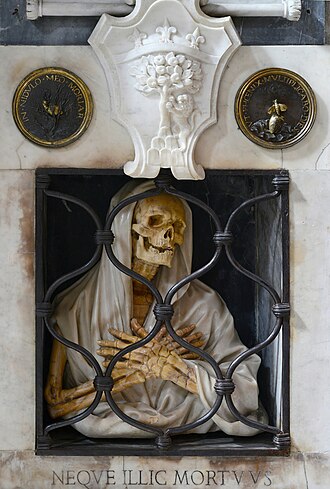
| Picture of the day |
|---|

|
|
This memento mori sculpture adorns the Tomb of Gisleni, at the Parish Basilica of Santa Maria del Popolo in Rome. Today is All Souls’ Day.
|

| Picture of the day |
|---|

|
|
This memento mori sculpture adorns the Tomb of Gisleni, at the Parish Basilica of Santa Maria del Popolo in Rome. Today is All Souls’ Day.
|